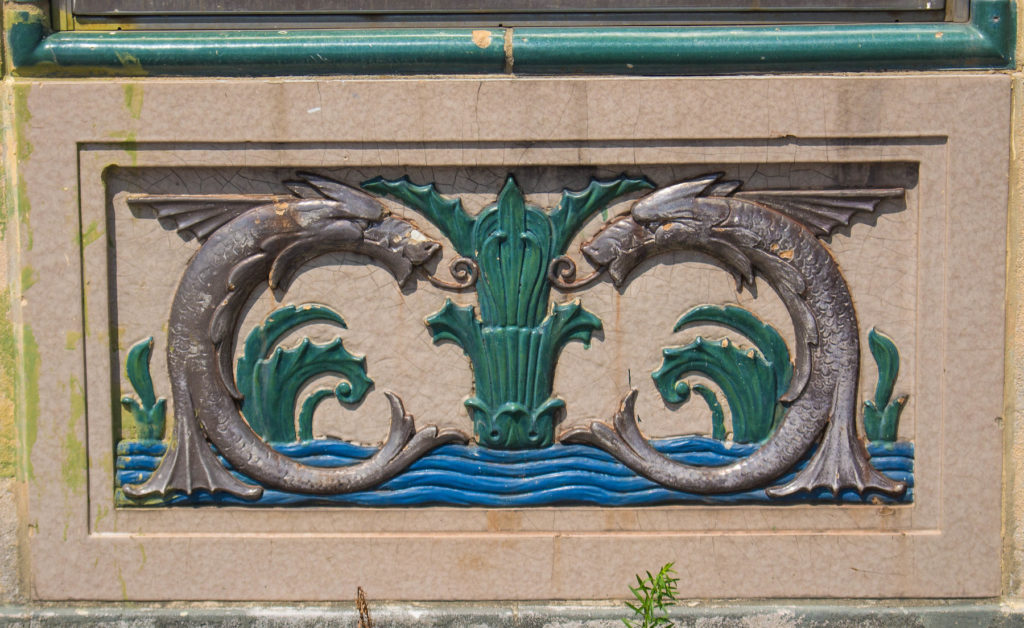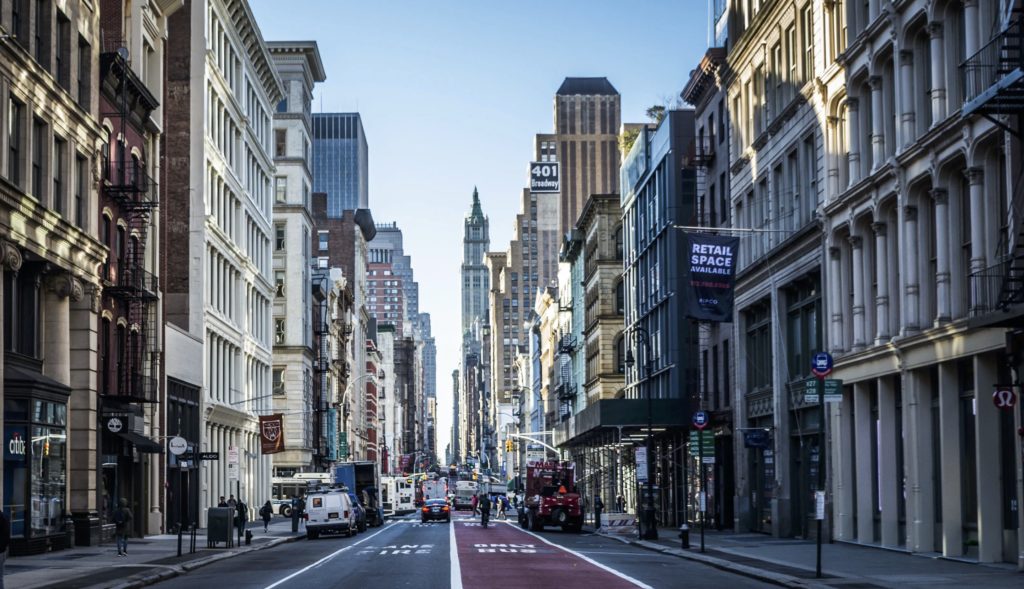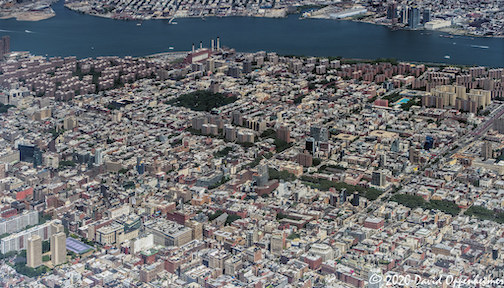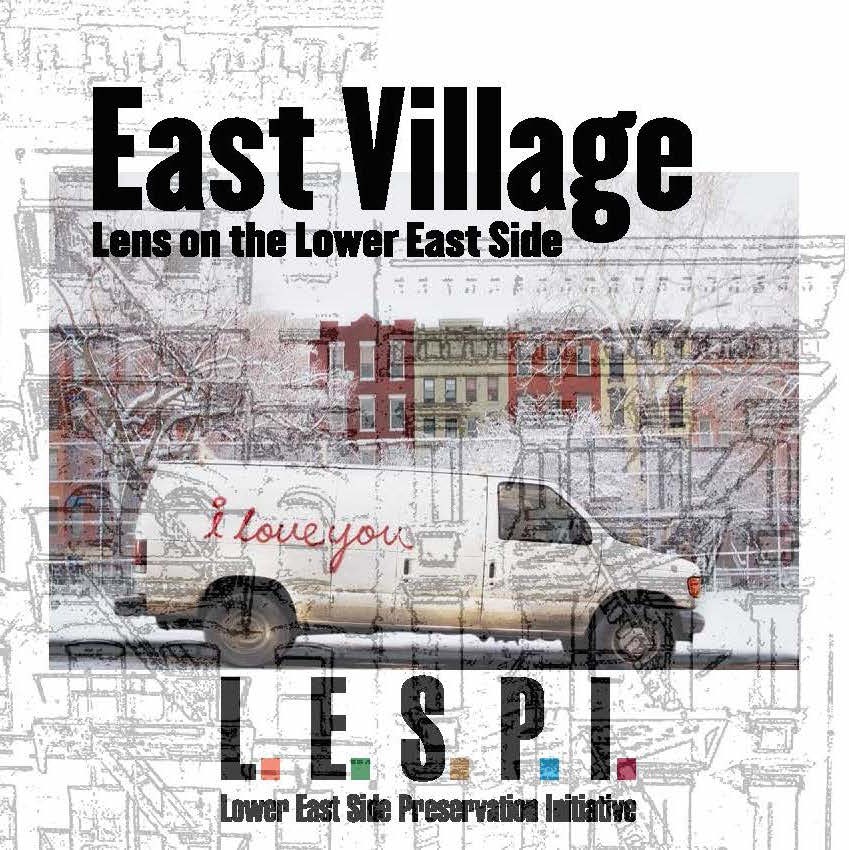LESPI Newsletter Fall 2020

Terrible Fire Consumes East Village’s
Middle Collegiate Church
A devastating fire almost completely destroyed the historic and much-loved Middle Church, at Second Avenue near East 7th Street, earlier this month. It left only the front facade standing – its stability and salvageability yet to be determined.
Additionally, the blaze completely destroyed the corner building to the north, built in 1846, whose electrical system was the fire’s apparent cause. It also damaged the Women’s Prison Association building to the south, built in 1838, where residents had to flee. These buildings are all within the East Village / Lower East Side Historic District.
Middle Collegiate Church, built in 1892 by architect Samuel B. Reed for the Collegiate Reformed Dutch Church, has long had a prominent presence in the East Village. The current congregation, Middle Church, prides itself on its inclusiveness, very much in the spirit of the neighborhood.
Currently the Dept. of Buildings along with a team of preservation architects and engineers are trying to determine whether or not the building’s limestone front facade can be stabilized and restored, and reused for what will essentially be a new building behind it. We’re hoping it can be. A bit of good news: the 1729 “New York Liberty Bell” that long resided in the church belfry was recently found to be undamaged.
You can help Middle Church rebuild by donating at their website HERE.
Fighting to Save Two East River Park Historic Buildings

East River Park’s Track House, 1939.
Photo: NYC Parks Dept. Archives.
Track House terra cotta ornament.
Photo: Bruce Monroe.
Two East River Park Art Deco gems – the Track House and Tennis Center Comfort Station – are still facing the wrecking ball, unless the City steps up to do the right thing and restores/reuses the buildings in the new reconstructed park.
According to LESPI Board Member Deborah Wye, who surveyed local park architecture, “these buildings are the only structures in Lower East Side parks whose design and ornamentation – which include terra cotta fish and other nautical motifs – is specific to the neighborhood, namely the area’s maritime history.” Their proposed replacements are essentially generic designs intended to be used in parks around the city.
This summer we were thrilled when, based on LESPI’s application to the State, the buildings were declared eligible for the State and National Registers of Historic Places. We were then able, with an Emergency Grant from the NY Landmarks Conservancy, to bring on Davies Toews Architecture, who produced beautiful renderings of the buildings, and provided preliminary engineering and cost estimating. They demonstrated that saving the buildings was not only best for the park and community, but appeared to be very doable from both a structural and cost perspective.
In October we presented this material to Community Board 3, and were very happy to receive unanimous approval for our proposal to move and reuse the structures, and modernize the interiors. We’re now reaching out to local community tenant organizations and elected officials to obtain their backing.
TAKE ACTION: to support our preservation effort, please sign LESPI’s digital petition HERE. Thank you!
The City’s Relentless Push to Upzone

Photo: NYC Dept. of City Planning. 
Photo: David Oppenheimer
As if 2020 weren’t already a Pandora’s box of horrors great and small, in October Mayor de Blasio launched an initiative to up-zone SoHo and NoHo including part of the East Village, striking fear into neighborhood and preservation advocates citywide.
The plan would set a dangerous precedent: It would promote out-of-scale luxury condominiums, and allow Big Box stores to drive out small businesses. And it would dramatically alter the streetscapes and scale of existing historic districts, with new buildings allowed to be up to 2-1/2 size the existing zoning allows. This would create a high-rise “Midtown” environment, including loss of light and air, in what’s now a mid-rise district.
Though the Mayor and his allies tout the plan as a means of increasing “affordable housing” it contains no provisions to ensure that explicitly middle- and low-income residents get new access to housing. Instead, this proposal promises to make neighborhoods less neighborly—and less affordable.
LESPI entered the fray, testifying against the plan at a December 8 hearing held by Community Board 2. We’ve signed on to the Community Alternative Zoning Plan for Soho/Noho, created by Village Preservation and supported by 13 local organizations, which calls for more flexibility in building use than current zoning allows, without the upzoning the City’s pursuing.
TAKE ACTION: we’ve drafted a mass-email protest letter that you can automatically send to your local elected officials, available HERE. We urge you to send your letter to join the hundreds already sent, if you have not already done so—and to share it widely through your social networks. Thank you!
“East Village: Lens on the Lower East Side” Photography Exhibit

LESPI’s “East Village: Lens on th Lower East Side” 
Marlis Momber, “La Banda”.
Check out the East Village photography exhibit at Theater for the New City on First Avenue at East 9th Street (call ahead, access is very limited). Sponsored by LESPI, TNC and Art Loisaida Foundation, the exhibit is based on LESPI’s book “East Village: Lens on the Lower East Side,” and showcases the beautiful work of the book’s six local professional photographers.
On Tuesday December 29, author Marilyn Appleberg along with several of the book’s photographers will be giving a Zoom virtual book talk – look for our email invite, which we’ll be sending out shortly.
Until then, you can visit the online exhibit HERE. UPDATE: You can now watch the December 29 Zoom virtual book talk HERE.

